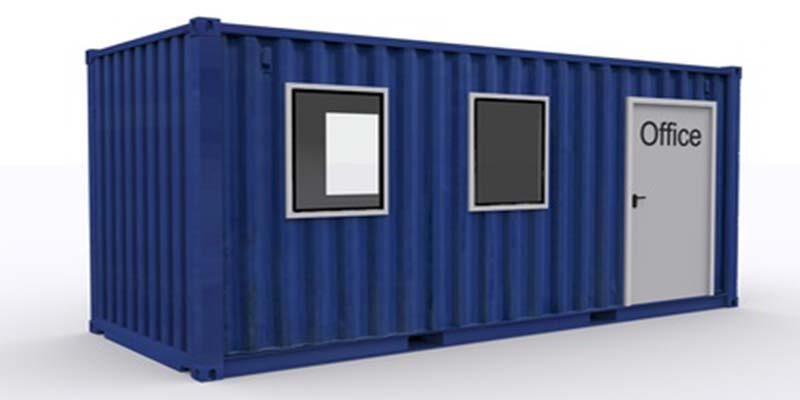When we are talking to people about what we do, many people’s first thought is, “oh, you mean like a converted shipping container”. We can see why they think this as there have been some clever shipping container conversions featured on TV and in magazines. But, if you are looking to create a home office in your garden (as you are reading this site, we guess you are) you might be better looking at a timber garden office than buying a converted shipping container.

Downsides of converting a shipping container into a home office
Whilst converted shipping container offices have many benefits, for instance, if you are into industrial design or like the idea of upcycling something at the end of its intended use. There are many downsides that people don’t consider:
- Fixed sizes: With a shipping container office you are working with a fixed size building. We wrote about one range a couple of years ago that is a standard 6050mm long by 2430mm x 2820mm high. So, you are creating a long, and narrow room. Yes, you could buy a second container and join them together to create a deeper room. But, the height could be an issue and restrict where you can place it in your garden. If you are planning to install your office under the Permitted Development rules, at 2820mm you would be forced to site the container at least 2 meters from each boundary. This could mean you end up with space alongside the office which isn’t very useable.
- Craned in: A shipping container office will be delivered to you on the back of a lorry and then craned into position. This makes installation quick – just a few hours, but limits you, if you don’t have vehicular access close to the intended site, as the crane on the lorry, has limited reach. You could, of course, higher a bigger crane to make the lift, but your costs would soar!
- Retrofit: Obviously a shipping container was designed for a very different use than a garden office. Any alterations to mould it into an office are going to be as a retrofit. With retrofits, you are always forced to make compromises. For instance, you don’t have the flexibility in layout or incorporating as much insulation as you might find in a timber garden office.
When buying a container office you need to budget for a suitable foundation, any delivery and lifting costs on top of the cost of the building itself.
Buying a timber garden office on the other hand
Timber buildings designed for year-round use as a home office, don’t have the problems described above. Instead, they offer:
- Flexible sizes: With a container office you are limited to fixed sizes. With a timber garden office, you have a huge choice when it comes to size. If you opt for the modular design route you will find buildings as small as 2.2m x 2.2m up to huge rooms 8 and even 10 meters wide. If you opt for a bespoke design you can specify a size to the nearest millimetre to maximise the space you have available.
- Permitted development friendly: Timber garden offices are designed to comply with the Permitted Development rules, with many designs coming in at 2.5 meters high allowing them to be sited within 2 meters of a boundary.
- No direct access, no problem: With a container office your site needs to be accessible so that the lorry can park nearby and lift the building into your garden. This is not a problem with timber garden offices, as they come in manageable sections which can, if need be, transported through your house.
- Tailor made: Timber garden offices are constructed around their intended use – a room that can be used all year round. They are made-up from several layers of material creating a highly insulated, waterproof building that will stand the test of time. You are not making compromises in the build-up the floor, walls and roof and you are not forced to make compromises on the positioning of doors and windows as the timber frames will be designed around them.
There are some great timber garden office designs on the market, explore some here.

